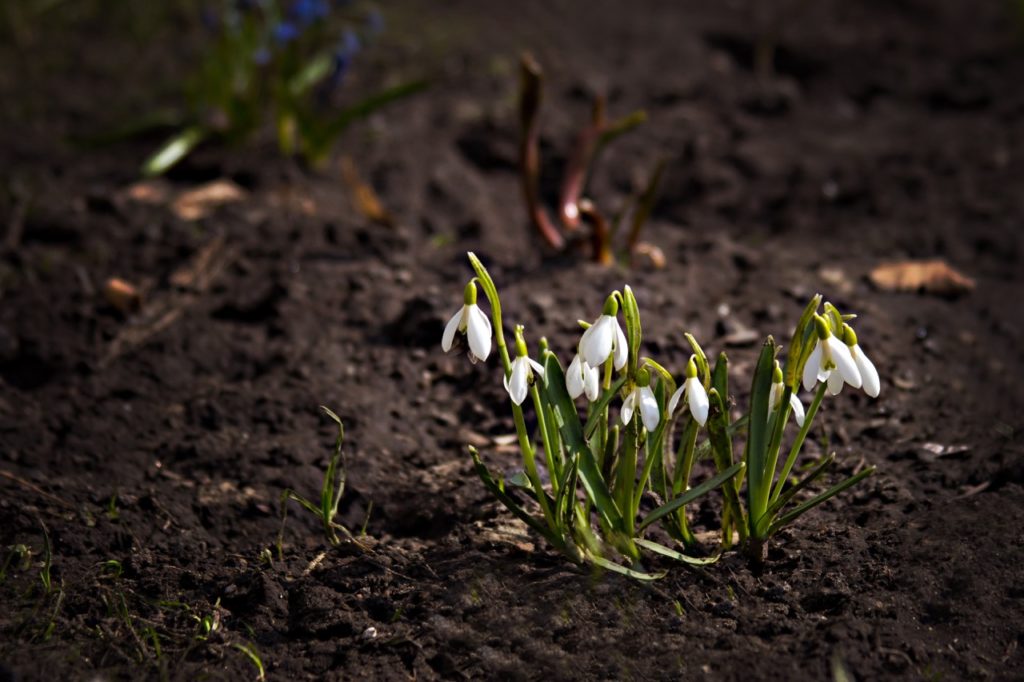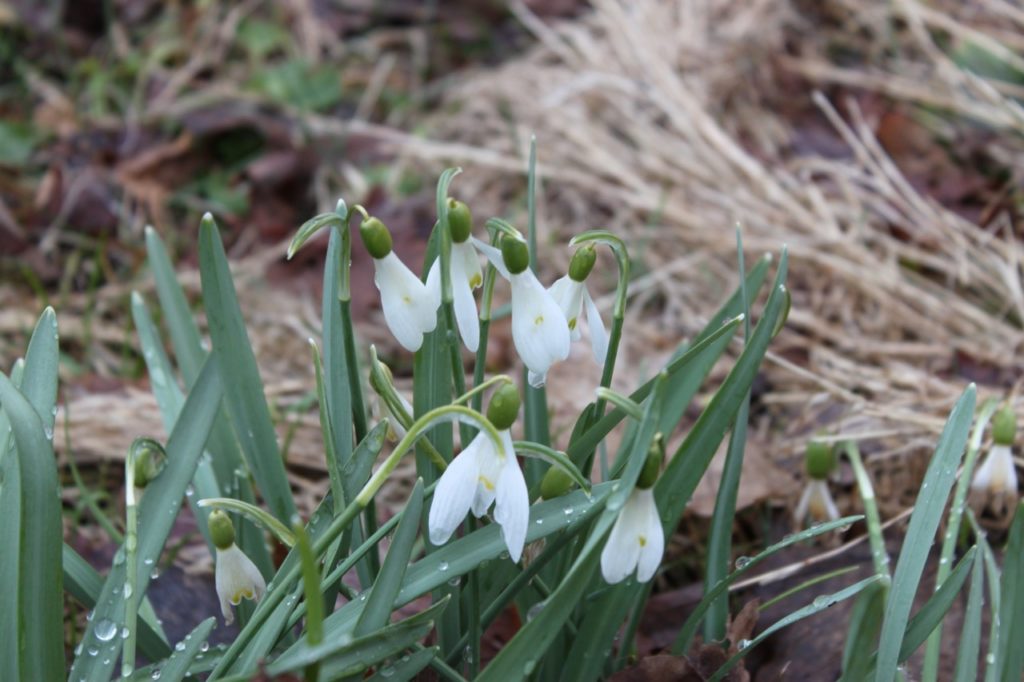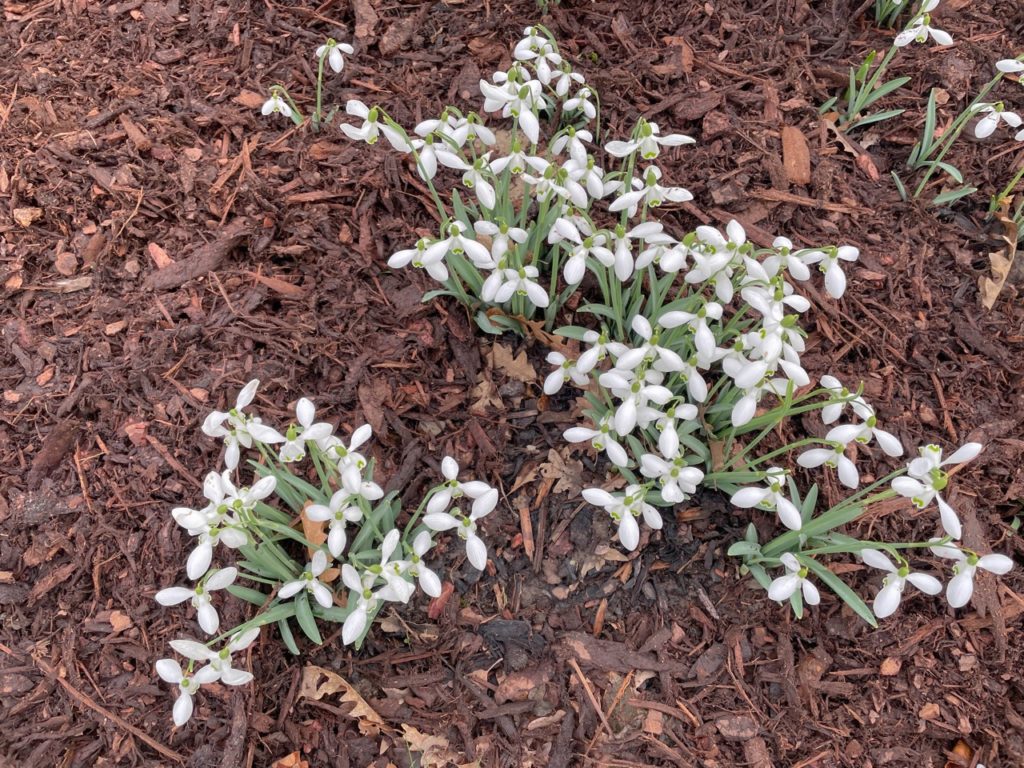Jane Rowlinson Has Been Growing Snowdrops For 25 Years – This Is Her Advice

BULBS > GALANTHUS
Reviewed By PETER LICKORISH

Peter is a Horticulture Lecturer and self-employed Horticulturist, with a passion for diverse areas of the industry - from garden design to the science behind plant growth and propagation. He has completed the Royal Horticultural Society’s Master of Horticulture (MHort) Award and lectures on RHS courses at Bedford College.
Contributions From JANE ROWLINSON

Jane is the Owner of Morlas Plants, an online plant nursery that specialises in Galanthus and other bulbous plants. Jane has been growing snowdrops for over 25 years. Her nursery is home to over 500 different varieties of Galanthus.

Val Bourne is a GMG award-winning gardener, lecturer and author who is known for her organic gardening style - with experience dating back over 60 years. She has an allotment and has published several books on natural gardening, including 'The Ten-Minute Gardener' and 'Colour In The Garden'.
IN THIS GUIDE
Snowdrops are among the cutest little plants you can grow, as these bulbous perennials average only about 12cm tall, displaying narrow green foliage.
As for those tiny, nodding flowers that are usually a snowy-white shade, they’re the most understated attention-grabbers you’ll ever see!
In this guide we feature Jane Rowlinson, who is the Owner of Morlas Plants – a nursery home to more than 500 snowdrop varieties.
“From late autumn and through the winter months, the short days can be difficult to get through,” says Jane.
“I find growing snowdrops gives me a reason to get excited to go out into my garden during this time of year.
“You can grow species and cultivars that will flower from September right the way through to April, so there can always be colour in the garden during the winter months.
“Snowdrops are also a very important plant for early raising insects (especially bees) to feed from.
“There is nothing better on a sunny winter day than listening to bees buzzing from one flower to another.”
Overview
| Botanical Name | Galanthus |
| Common Name(s) | Snowdrop |
| Plant Type | Bulb / Perennial |
| Native Area | Southern and Eastern Europe |
| Hardiness Rating | H5 |
| Foliage | Deciduous |
| Flowers | Solitary, pendent, bell-shaped flowers with 3 outer tepals and 3 inner ones |
| When To Plant | October to November for bulbs |
Sunlight
Preferred
Partial Shade
Exposure
Exposed or Sheltered
Size
Height
0.1 – 0.5M
Spread
0.1 – 0.5M
Bloom Time
Winter / Spring
Soil
Preferred
Loam
Moisture
Moist but well-drained
pH
Any
Galanthus, which is the genus’ scientific name, is probably the earliest of spring bulbs and, for the most part, comes into flower in February.
“I love plants that sing of a particular season and snowdrops do just that,” says Val Bourne, expert Garden Writer.
“I got a big selection of snowdrops and have around 300 different varieties and cultivars.”
Although these plants are small and dainty, they are very hardy, make do in any type of soil and are content with virtually any exposure.
The nodding bell-like flowers are made up of six tepals.

Only the outer three are clearly visible as apparent petals, each of which, like the flower itself, lazily droops from the plant’s arching stems.
The majority of varieties produce white flowers that are often edged or marked with green inside.
To top it off, they have a gentle and fresh fragrance.
How To Grow Snowdrops
Snowdrop bulbs are to be planted as soon as you acquire them from the merchant and luckily, the process couldn’t be simpler.
“Look for a spot in the garden where you will easily be able to admire your Snowdrops,” Jane suggests.
“Make sure that the ground is free-draining, but still moisture retentive.
“Snowdrops will not tolerate sitting in the wet during the summer months, so planting under trees, shrubs or roses is a good idea as they will take up all excess water.”
Water the planting area and place bulbs at a depth of 5-7cm in moderately fertile soil.
“Dig a hole deep enough for the snowdrop to sit where the leaves are just above the soil and place a small handful of grit in the bottom of the hole before planting for extra drainage,” explains Jane.
“Bury a label below the soil, take a photo and make a written note of where any special Snowdrops are planted. It is very easy for labels to go missing and names to be forgotten!”

If you propagate snowdrops by division, do so in April.
Lift up a clump with a shovel and separate offsets and bulblets carefully, with their roots intact.
Re-plant promptly to the same depth as the bulbs originally were, then water in well.
“As well as bulbs, snowdrops are also often marketed ‘in the green’ and sold as bundles of plants around February, which should be planted as soon as possible,” Master Horticulturist Peter Lickorish adds.
“Plant deeply, ensuring as a minimum that the white areas at the bases of the leaves are covered.
“I find they are best divided ‘in the green’ after flowering and I am always amazed at how well they flower the following year and also the speed with which clumps expand.”
Galanthus Plant Care
Sunlight
These plants should be sited in partial shade or filtered sunlight.
Planting them under deciduous trees will suit them very well.
“Yellow Snowdrops, such as Galanthus plicatus ‘Wendy’s Gold’, need to be planted in a sunny spot in order to give the best colour,” warns Jane.
Make sure you check the light requirements for the specific varieties of Galanthus you choose to grow.
Soil Requirements
A fairly rich, moderately fertile soil is best for Galanthus.
“If you have poor soil, good preparation is important before planting,” says Jane.
“Clear any excess stones, rocks or roots and add either leaf mould, home-made compost or any good quality loam-based peat-free compost before planting.”

A base of a mixed loam augmented with some organic compost or a little well-rotted manure will be perfect.
The soil should drain very well but retain moisture, so the addition of grit or perlite is recommended.
Watering
Snowdrops have modest watering needs.
The aim is to keep the soil moist to several centimetres below the surface, though it should never be soaked, let alone waterlogged, as this can cause bulbs to start rotting.

As soon as the soil gets dry, water in moderation.
Be especially vigilant during the summer and during any unseasonably hot and dry spell.
While too much water can cause these bulbs to rot, a lack of water can cause them to dry out.
Feeding
Other than fertilising the bulbs at planting time, snowdrops do not need regular feeding.

Incorporate a conservative amount of phosphor-tending organic fertiliser into the soil when you plant the bulbs, such as fish, blood and bone.
“Adding a top dressing of mulch to borders every Autumn will help them,” Jane says.
Pruning
Snowdrops should not be pruned or deadheaded at all.
Yellowing and wilting foliage should not be pruned either, because the leaves generate energy to replenish the bulb for the following year’s blooms until the very end of its life span.
Propagating
Galanthus bulbs form offsets and multiply, which is how the plants naturally form drifts.
The flowers also self-seed, but snowdrops spread less by this method than by multiplying.
Though these plants can be grown by seed, this method takes a few years to complete and considering that high-quality bulbs are readily available and are easy to plant, I’d recommend avoiding this method of propagation.
Snowdrops are among the bulbs that can be propagated by scaling and chipping, however, these methods are quite challenging and best suited for serious horticulturists.
Propagate these plants by dividing offsets and bulblets after flowering has finished but while the plants are still in leaf, which is usually at the end of spring.
They may be divided every 3-4 years or when you think that the plants have become overcrowded.
Common Problems
Snowdrops are remarkably pest-resistant and disease-free, but there are a couple of issues to watch out for.
“Don’t allow pots to become waterlogged or frozen, as this could kill your Galanthus bulbs,” says Jane.
Squirrels seem particularly drawn to these bulbs and may dig them up, so you might have to protect them with netting.
Another thing to look out for is grey mould, a fungal disease that can affect snowdrops.

Be especially vigilant for it during a mild winter.
It manifests on foliage and flowers as an ugly grey mould that gives the disease its name.
It then attacks the bulbs, causing them to rot.
Unfortunately, there is no commercially-available treatment for this disease.

